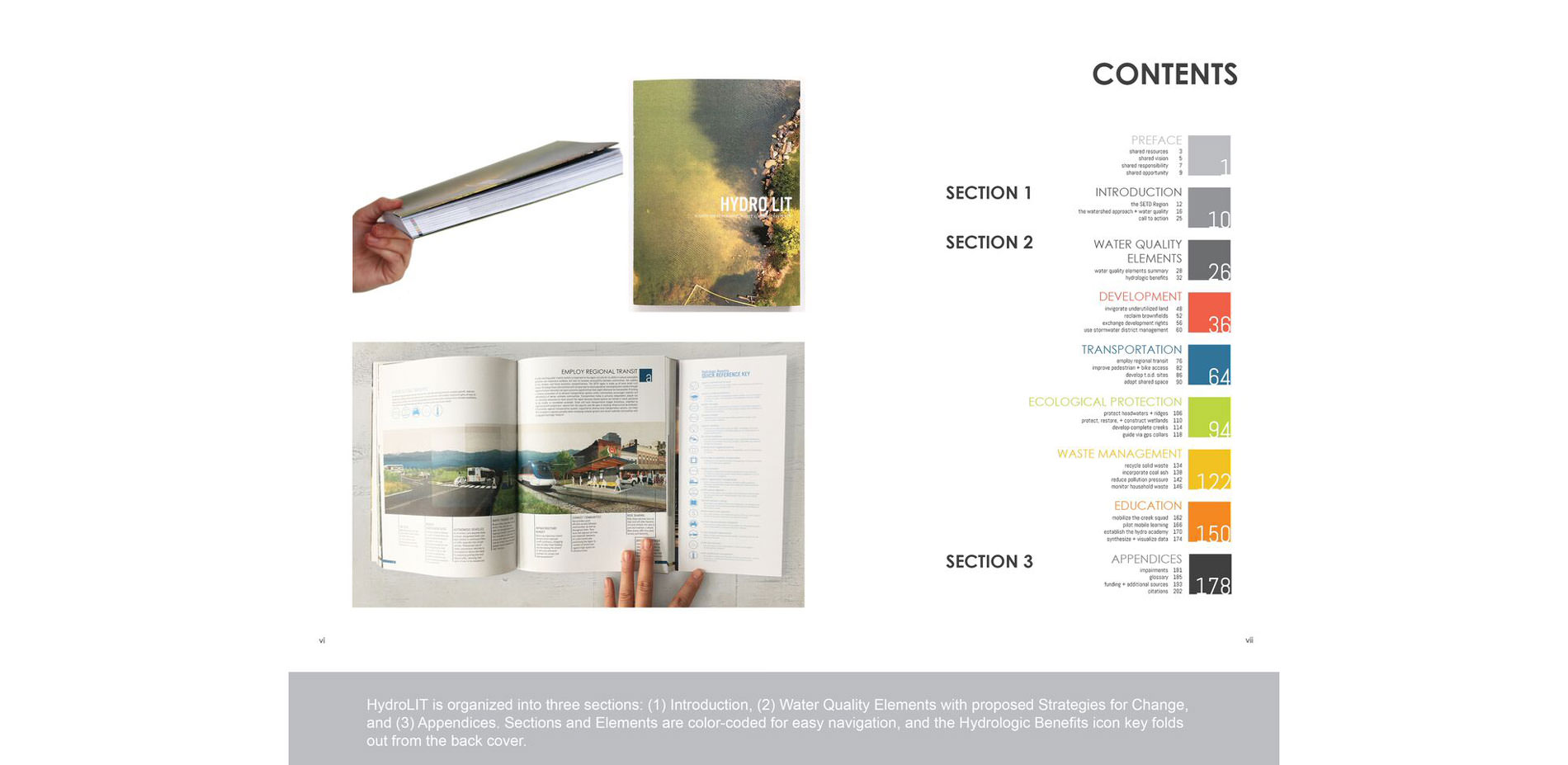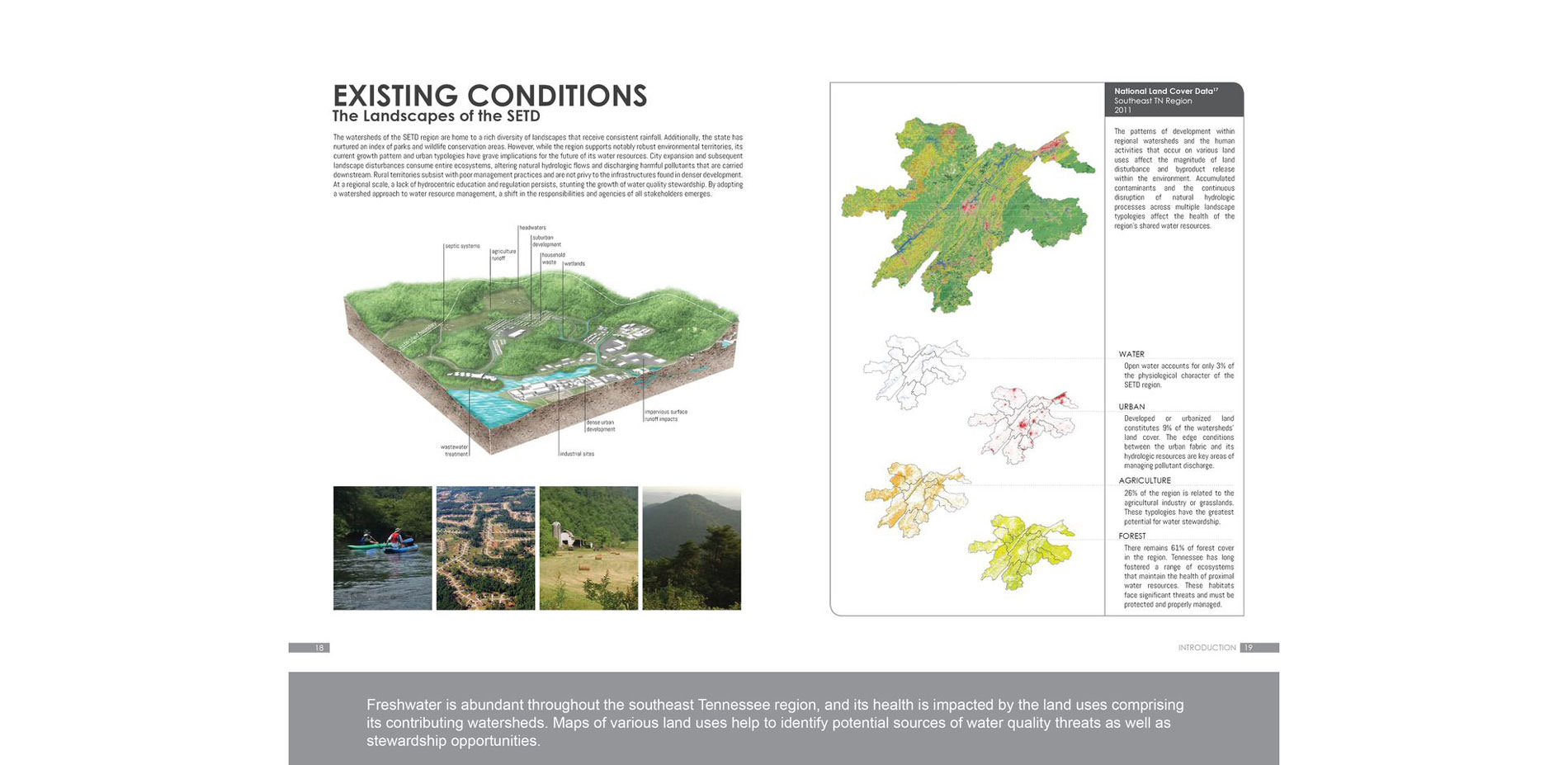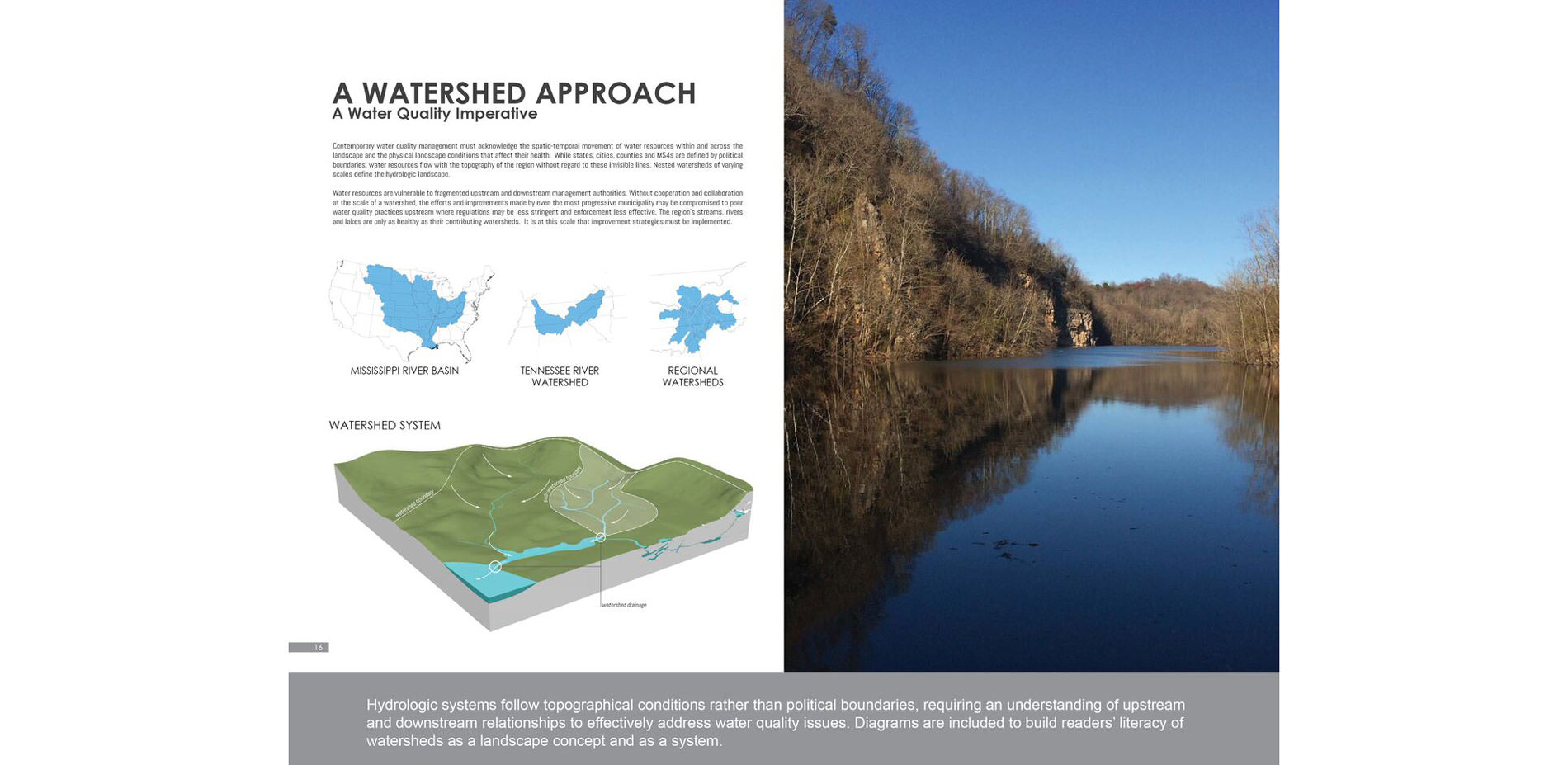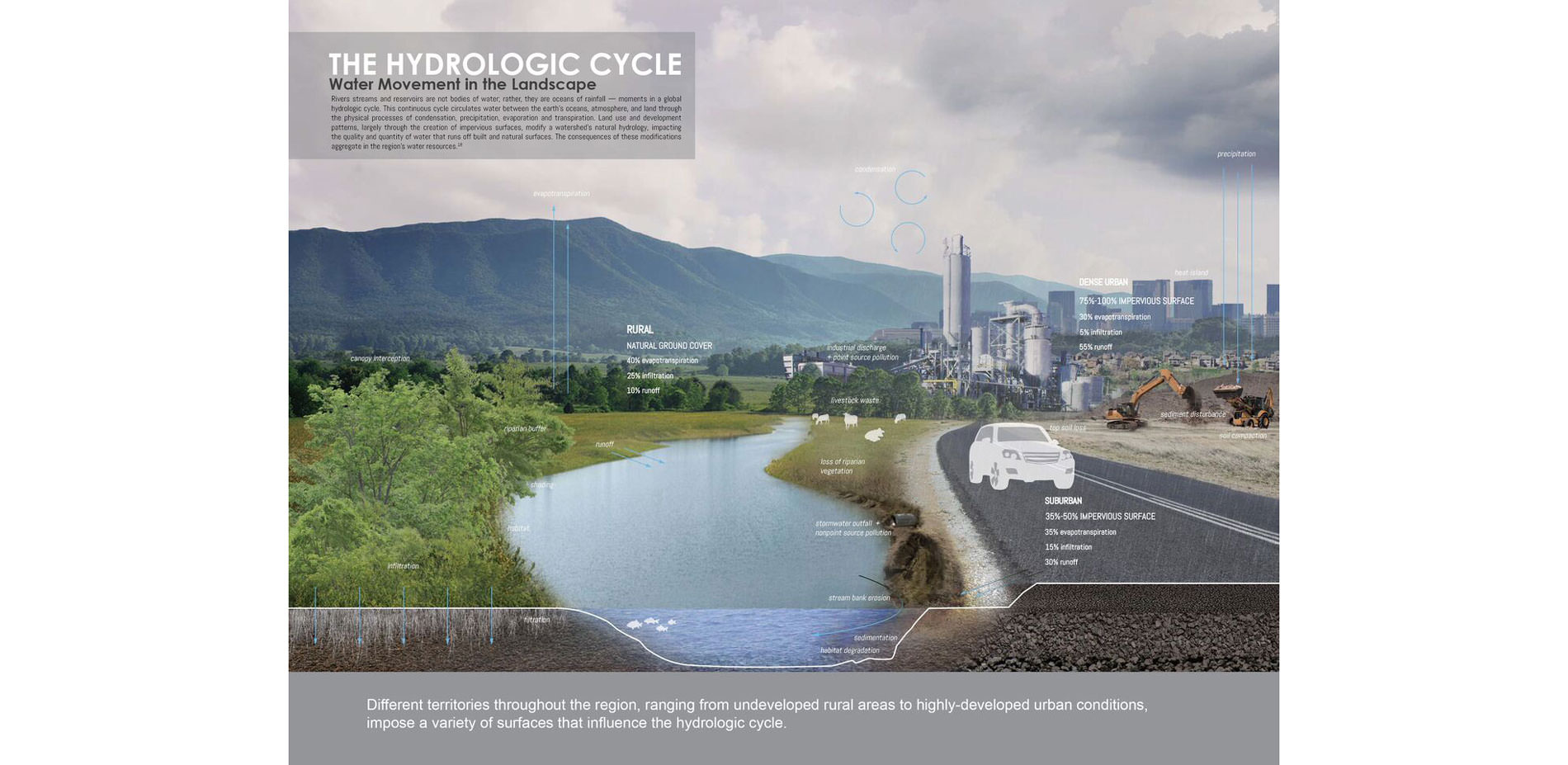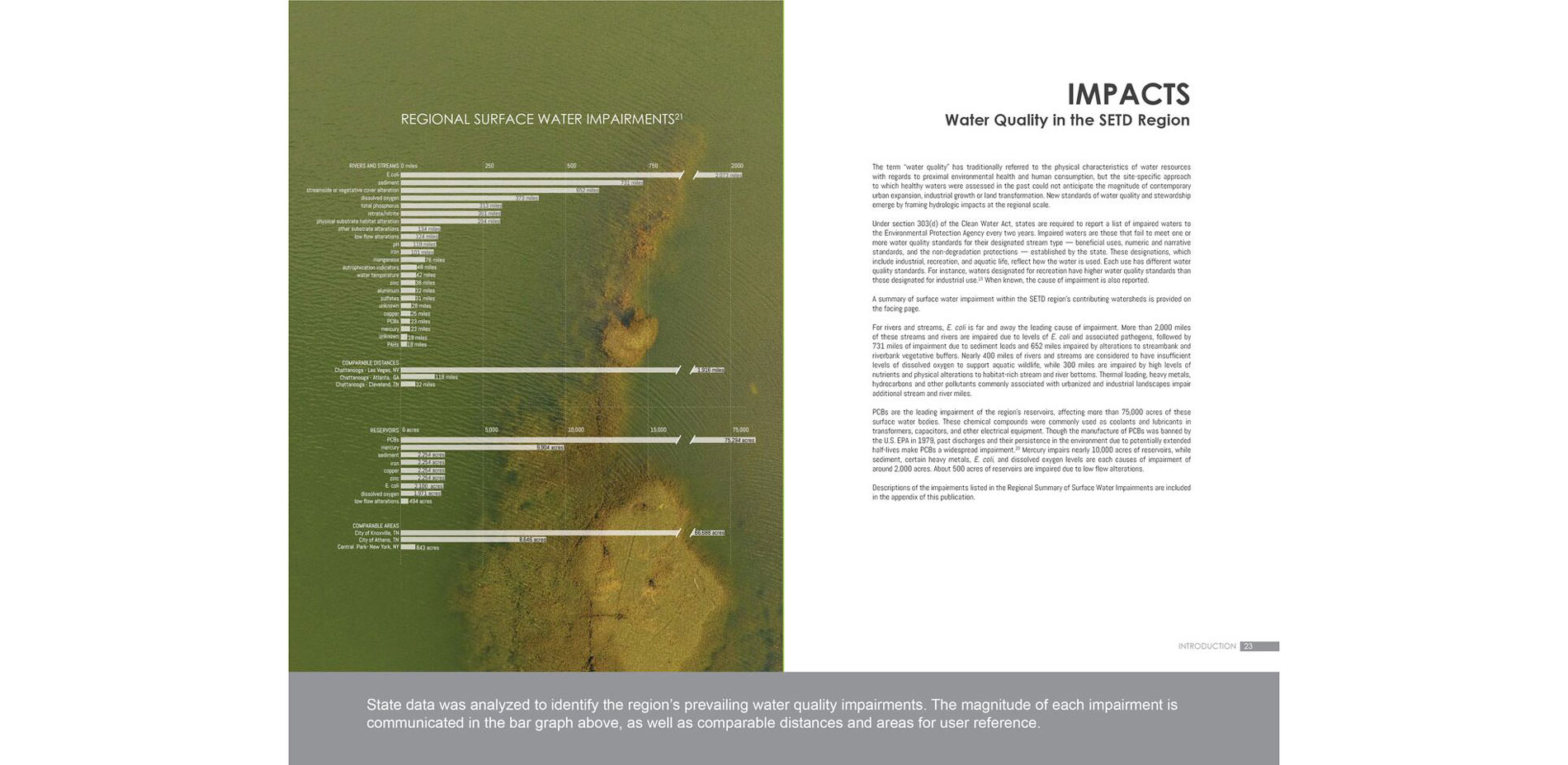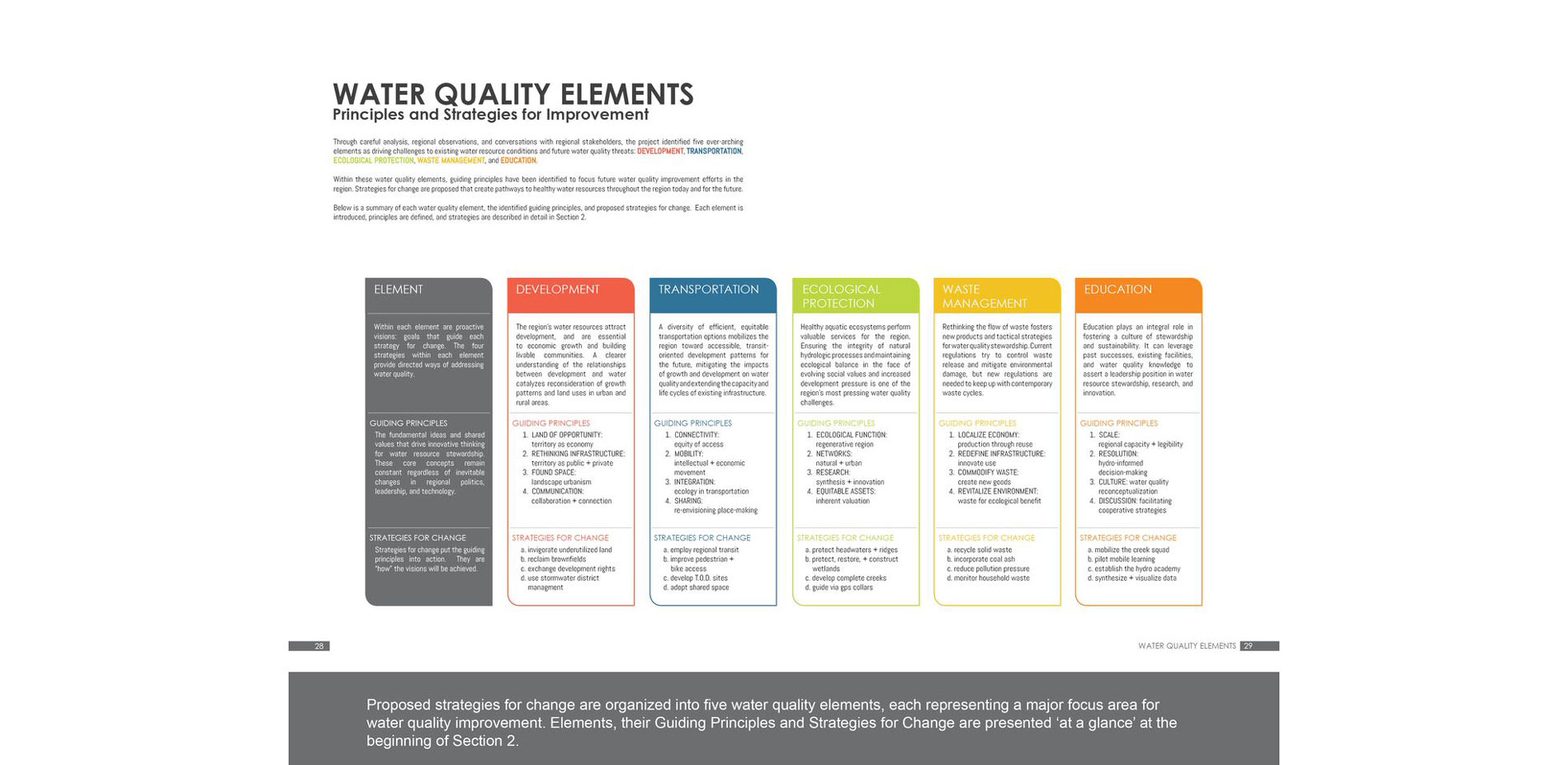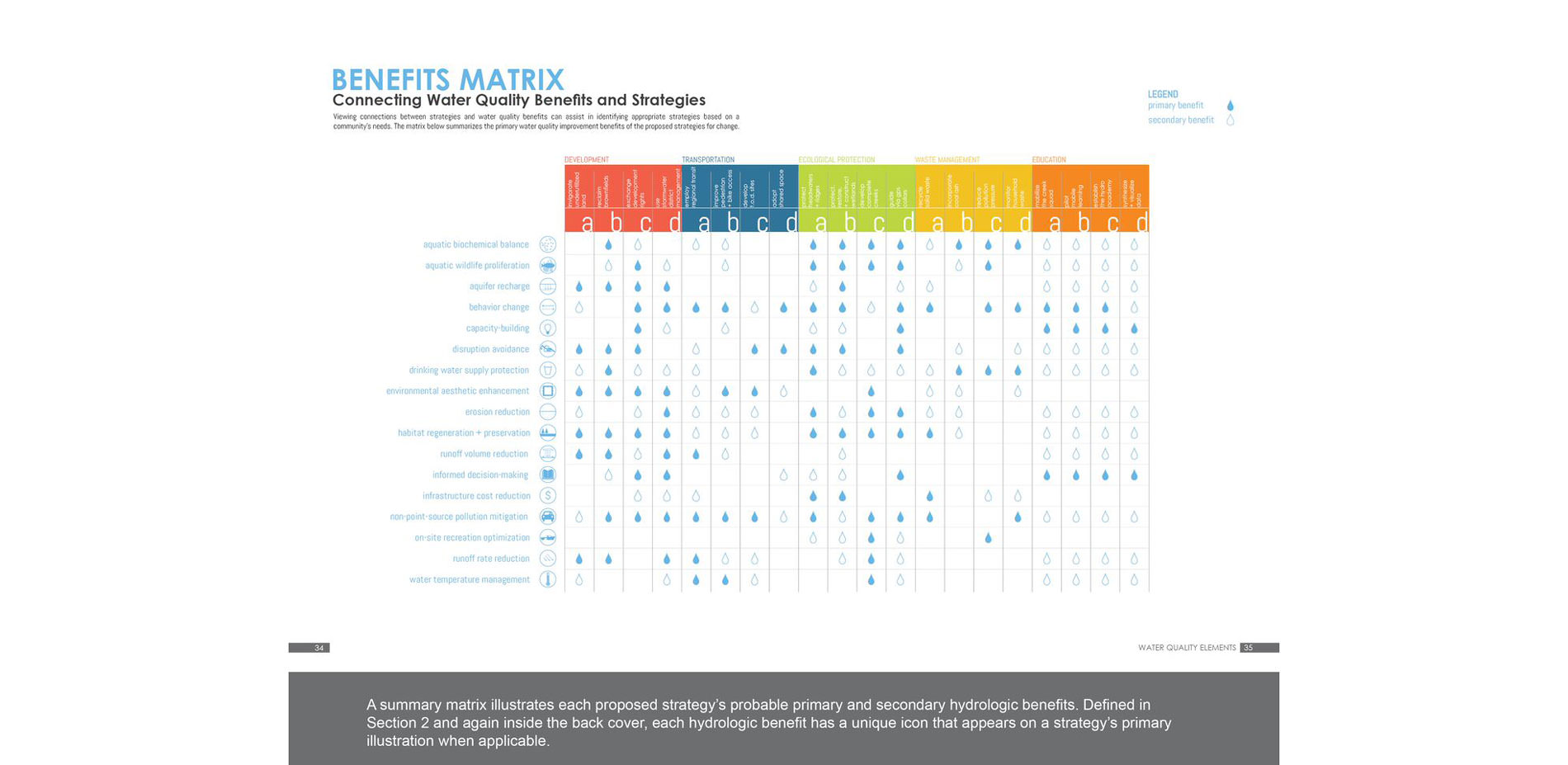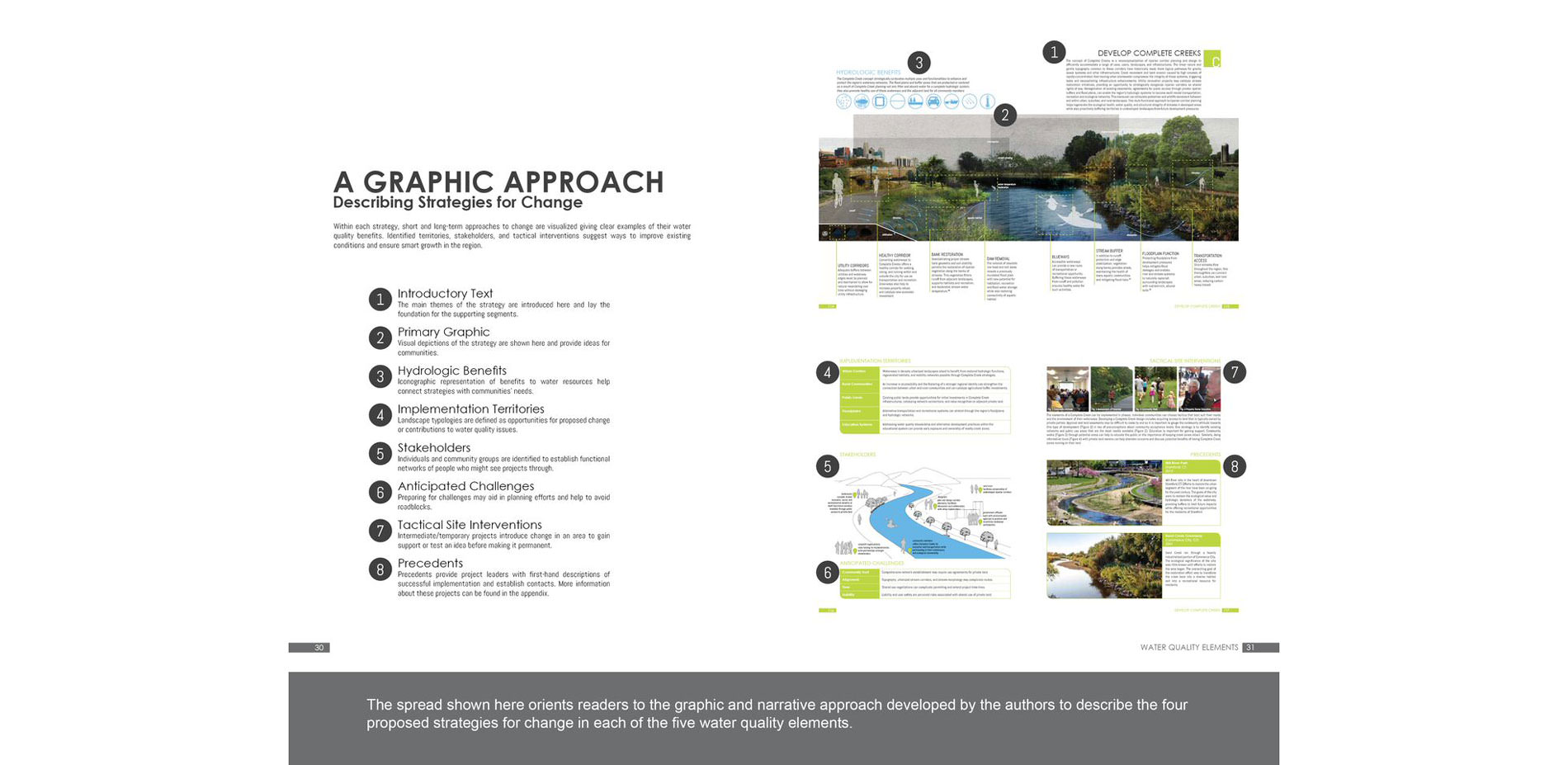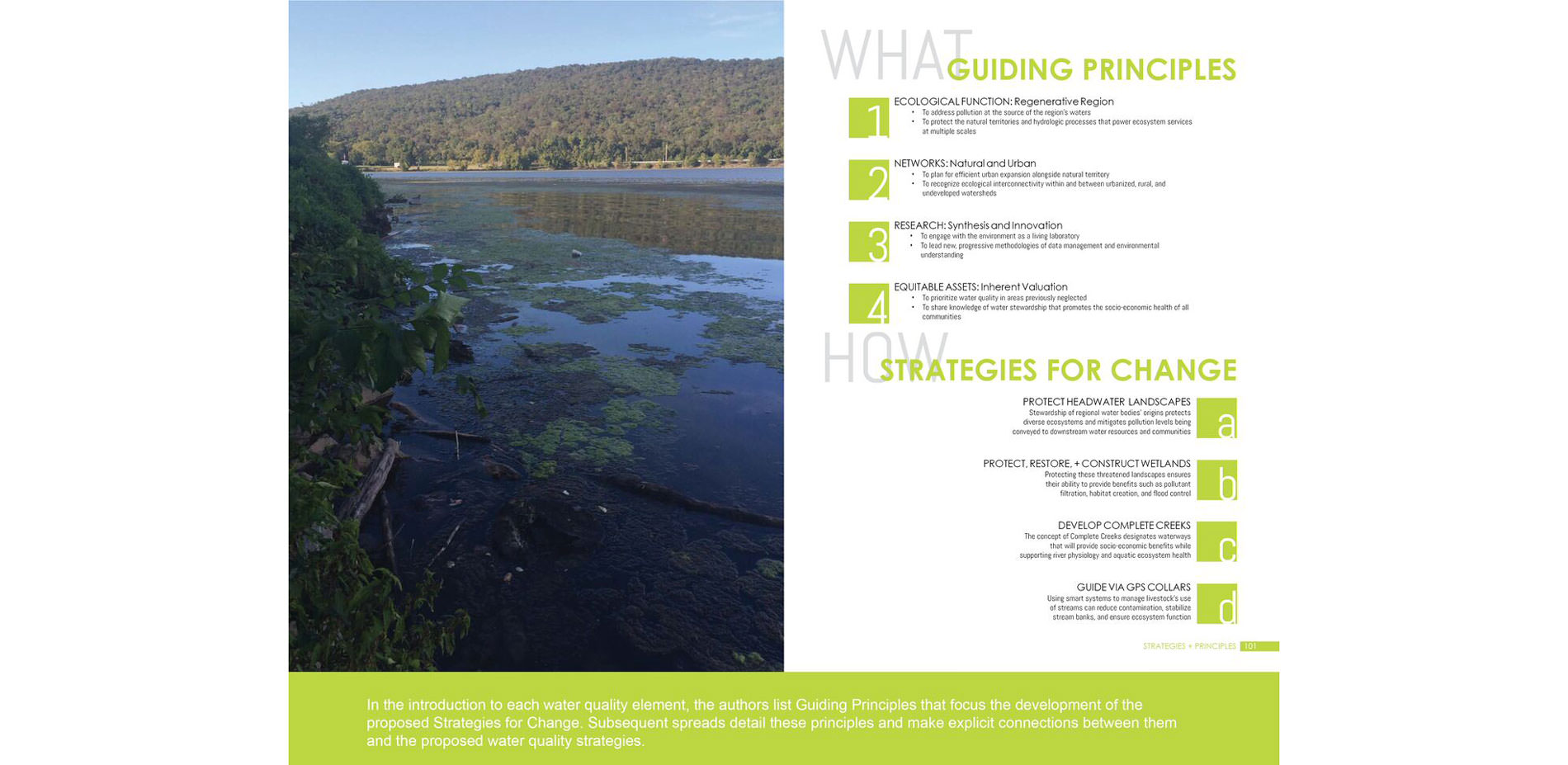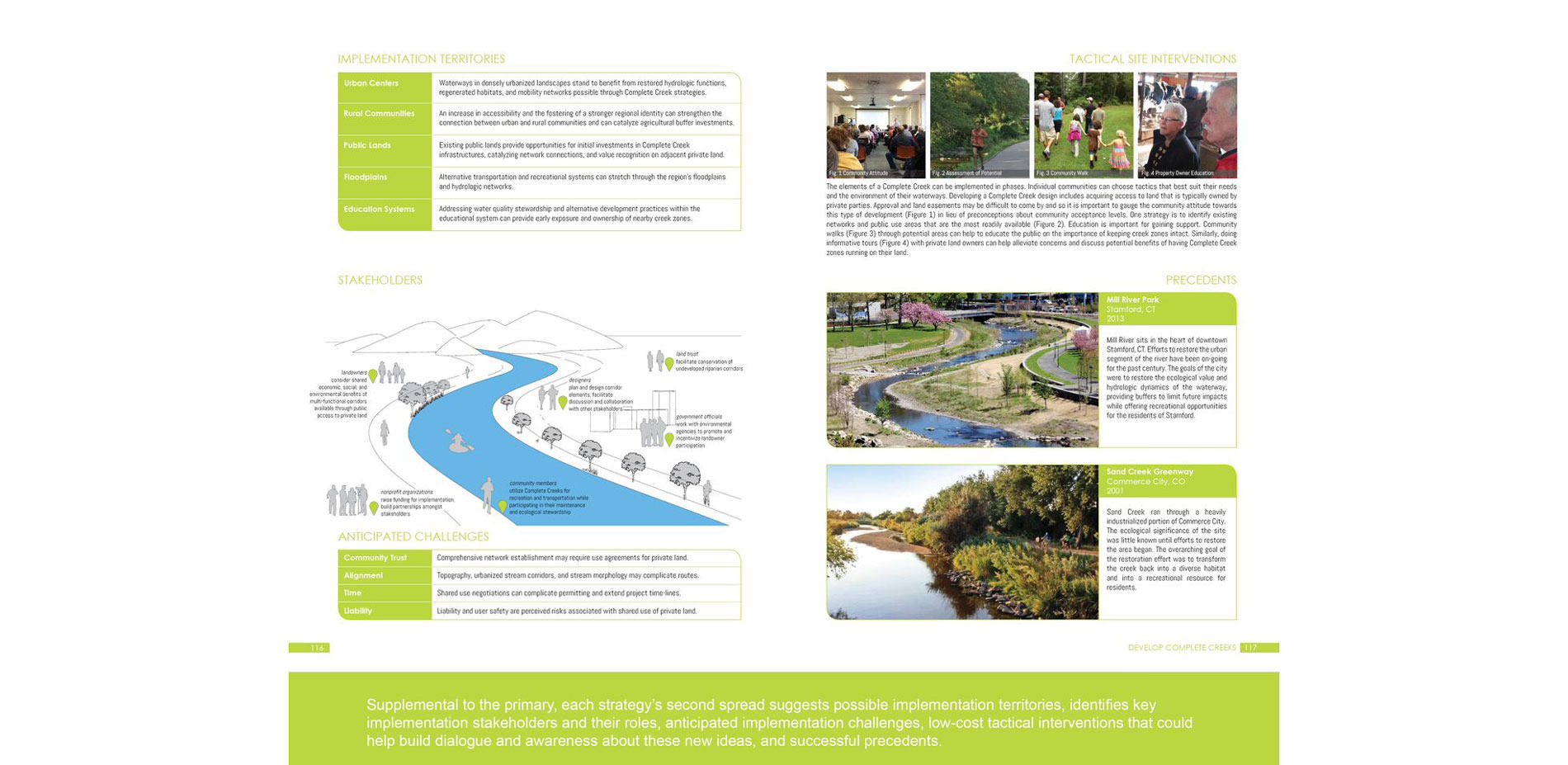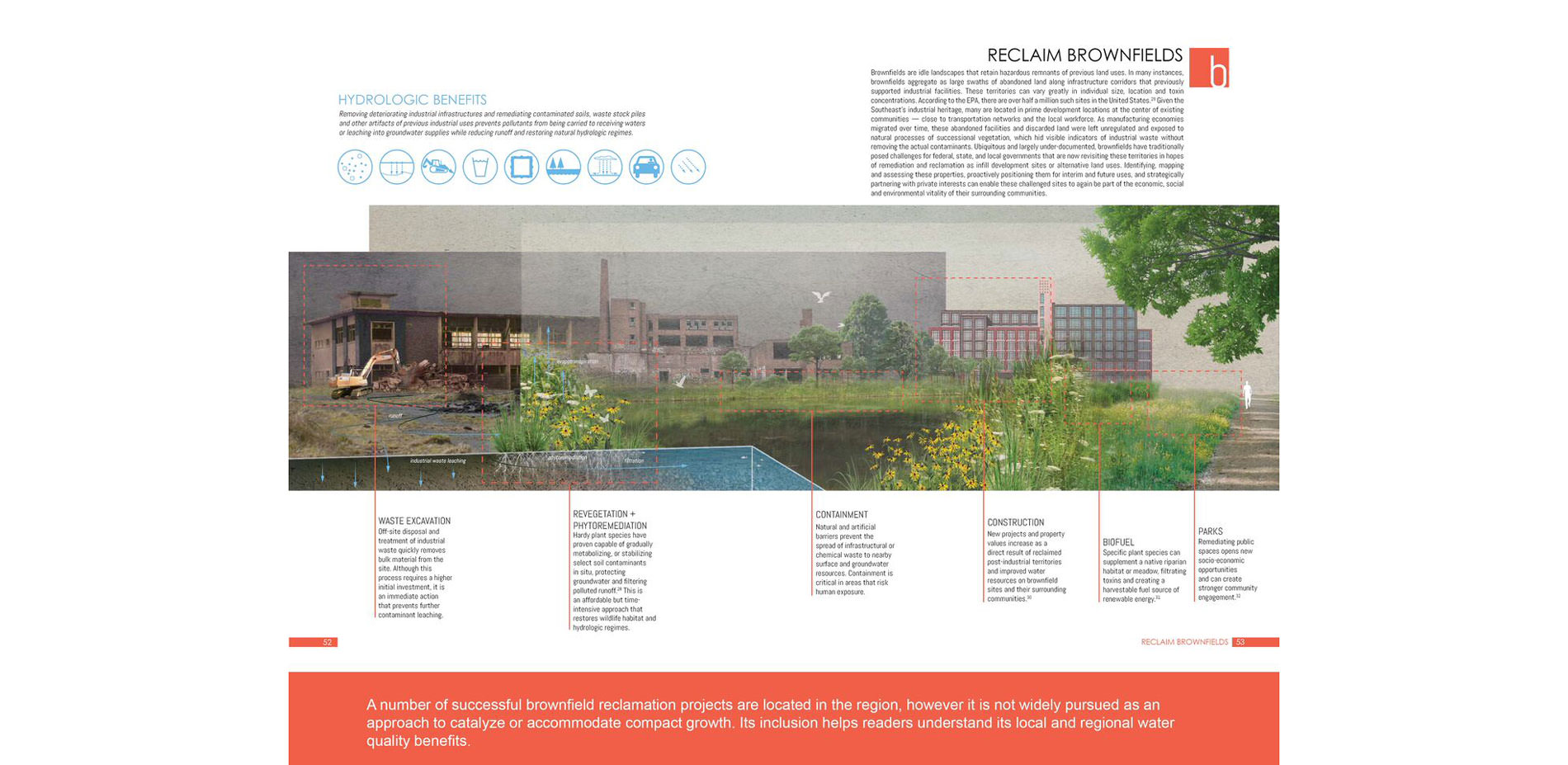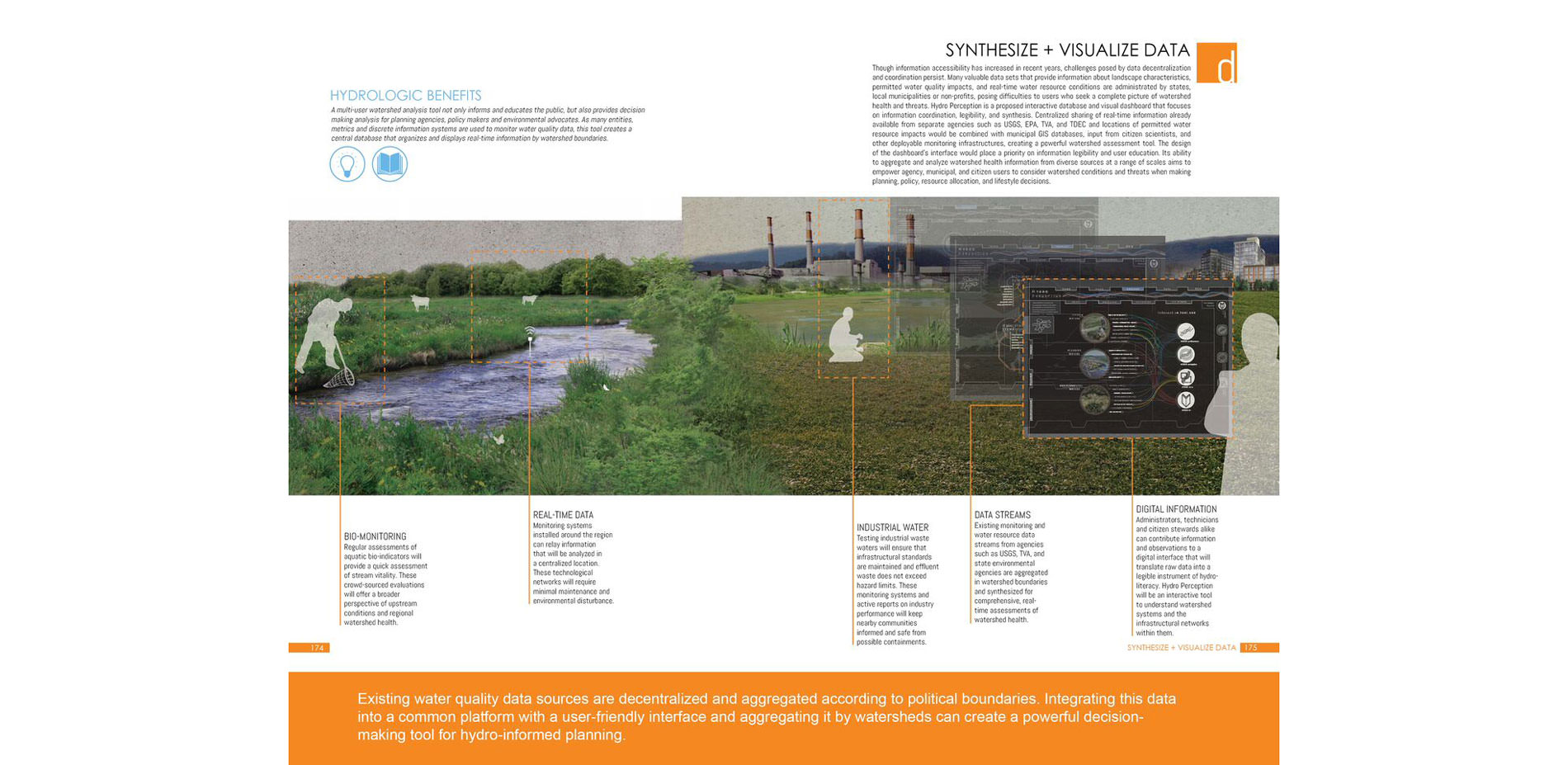HydroLIT: Southeast Tennessee Water Quality Playbook
AWARD OF EXCELLENCE
Communications
Southeast Region, TN, USA | Team: Lindsey Bradley, Student ASLA; Erica Phannamvong, Student ASLA; Kyra Wu, Student ASLA; Sarah Newton, Student ASLA | Faculty Advisor: Bradford Collett, ASLA
University of Tennessee
A truly substantive publication by students. They should consider turning this into a real book. I want this book!
- 2017 Awards Jury
PROJECT CREDITS
Studio Participants
- Ruxin Tao, Student ASLA
- Andrew Tarsi
- Kenny Townsend, Student ASLA
Sponsors
- Southeast Tennessee District (SETD), represented by Chuck Hammonds, Assistant Executive Director
- Jennifer Williams, Regional Planner
HydroLIT Advisory And Review Team
- Chuck Hammonds, Assistant Executive Director SETD
- Jennifer Williams, Regional Planner, SETD
- Michael Frixen, Planning Director, SETD; Matthew Snyder, City of Chattanooga
- Jennifer Norton, Water Quality Specialist, City of Chattanooga
Publication By
- The University of Tennessee School of Landscape Architecture Environmental Design Lab
PROJECT STATEMENT
HydroLIT is a manual that proposes innovative strategies for improved water quality in the southeast Tennessee region. These strategies acknowledge the ability of watershed boundaries to offer a framework for merging visions of urban development and ecological health. They coalesce the roles of economic prosperity and natural resource health in shaping urban life as well as the relationship between designed interventions and their surrounding biophysical flows. These proposals function at multiple scales and offer tactical interventions as economical first steps for local communities to begin implementation. HydroLIT is a pioneering toolkit that aims to empower citizens and policymakers with knowledge of water quality stewardship that can affect change across the region.
PROJECT NARRATIVE
CONTEXTUAL LEGACIES & FUTURE:Water shapes Tennessee’s physical and cultural landscapes. Its flows and cycles guide the movement of capital, material, and life, forming unique ecosystems and dictating human settlement patterns. Birthplace of the Tennessee Valley Authority, arguably one of the most ambitious regional development projects ever undertaken by the United States government, the state possesses a long legacy of technological innovation and production driven directly by the Tennessee River. It is the most fundamental resource of the region and its health and connecting waterways are inexorably linked to the future of urban development in the state. Already, the Tennessee Department of Environment and Conservation (TDEC) has estimated that about 30% of the state’s streams are of such poor water quality that they cannot support healthy aquatic wildlife and almost 40% are not fit for human recreation. In light of recent design responses in urban planning and development that focus on rising sea levels breaching dense coastal cities, a larger narrative of inland water resources must also be addressed. Sprawling growth patterns, deteriorating infrastructures, and legacy pollutants that are remnants of a historical narrative of industrial growth leave the region’s water vulnerable to environmental crises and system failures. The state possesses dynamic networks of energy, industrial, and agricultural production that exacerbate these existing threats. However, Tennessee has the opportunity to redefine its infrastructural geometries, anticipate environmentally responsible urban expansion, and design for the stewardship of the region’s water resources. This will not only retain the integrity of the region’s natural treasures but also protect its identity as a desirable place to live, work, and play.
RESEARCH:
In 2015, a graduate landscape architecture research studio presented a critical perspective on the water resources and physiographic characteristics of the region. Their research was a collaboration with the Southeast Tennessee Development District (SETD), a regional council of governments serving 13 counties within the southeast Tennessee and northwest Georgia region. The studio examined persistent impairments within the region’s watersheds to map networks of pollution and waste cycles, analyze subsequent impacts on human health, and propose interventions in targeted landscape types. Analyzing the relationships between urban development and materiality of landscape, the work challenged existing infrastructural frameworks to make new connections that leverage the economic, social, and environmental value of water. Thorough scrutiny into the complexities of urbanization and water quality required extensive traveling and engagement with a variety of stakeholders within the region and led to proposals that responded to these water quality issues. SETD then sponsored the compilation and expansion of these initial student proposals into a fully realized playbook that would address a more robust range of strategies and community needs.
OBJECTIVES:
HydroLIT is a synthesis of on-the-ground research and community expertise that seeks to characterize present-day regional hydrologic systems and propose strategies that mitigate water quality challenges now and in the future. The research makes a significant contribution towards the centralization of multi-scalar data for the benefit of the public, government and agency officials, developers, water resource advocates, and design professionals not only in large urban municipalities but also in rural governments with fewer regulations and resources. The recommendations and design proposals documented herein go beyond the basics of stormwater management in order to provide a richer, more adaptive response to the resiliency of inland water quality, making relationships between water resource quality and urban, suburban, and rural systems that are not immediately apparent to most audiences. The publication provides a diversity of graphics that make these connections legible and accessible to a range of stakeholders. While the study area focuses on the SETD region, these strategies are based on relevant and contextual geographic conditions that allow for a broader application to other states with similar water quality concerns. The publication’s emphasis on strategic, systems-level planning and design and the role of water as a sustaining resource, economic driver, and fundamental to quality of life offers a critical contribution to the ongoing dialogue of water resource management, policy, infrastructure and transformation within the SETD region and across the nation.
The publication identifies five comprehensive elements that pose challenges to existing water resource conditions: development, transportation, ecological protection, waste management, and education. Within these elements, guiding principles and strategies for change seek to re-envision the treatment of a range of landscapes and their relevant waterways. HydroLIT is designed for a range of users including policy makers, developers, community organizations, business owners, and individual residents whose actions, territories, and obligations influence regional water resources, while accommodating projected economic and population growth. The identification of anticipated challenges, relevant stakeholders, and achievable tactical interventions enables communities to begin the necessary conversations that affect change.
RECOGNITION & DISTRIBUTION:
In the spring of 2017, HydroLIT: Southeast Tennessee Water Quality Playbook launched at the event, “A Watershed Moment,” hosted by the Tennessee Aquarium Conservation Institute. The publication was officially endorsed by THRIVE 2055, an initiative that engages local businesses, non-profit organizations, government representatives and citizens from the 16-County Tri-State region to plan for changes in population, economy, and climate over the next 40 years. HydroLIT will be incorporated as part of the THRIVE 2055 Natural Treasures toolkit. At the event, members of Thrive 2055, city and county elected officials, public works employees, the Nature Conservancy, the Trust for Public Land, and many other professionals who are positioned to administrate water stewardship on a daily basis were given a digital copy of the publication. Following this event, SETD will distribute an initial printing of 300 hard copies around the region to the above mentioned stakeholders as well as release a digital copy online for the general public.
HYDRO LIT by Southeast Tennessee Tourism Association - issuu

